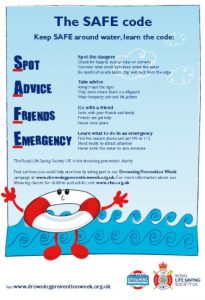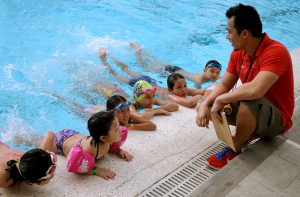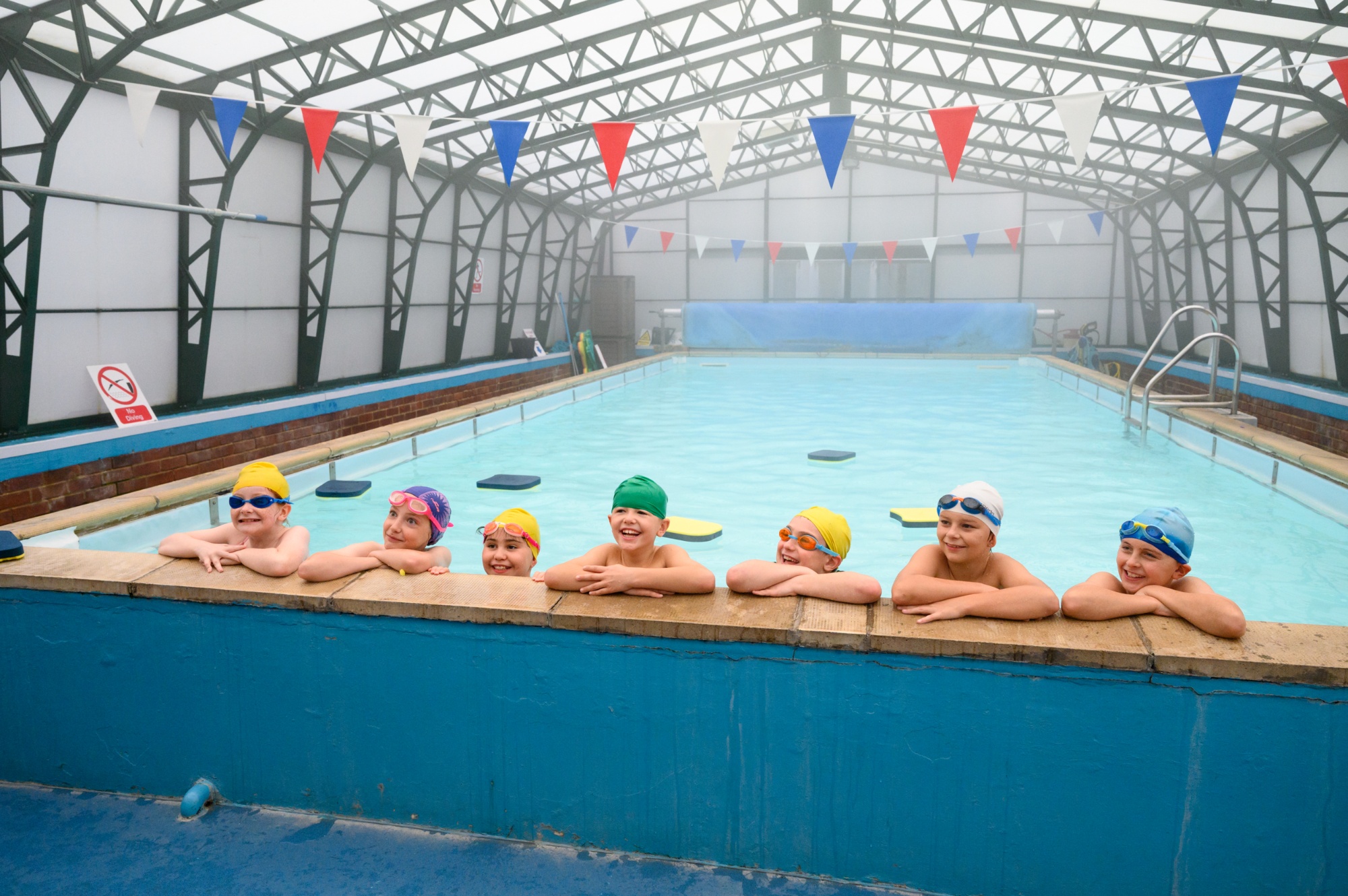Swimming & Water Safety
As well as being good for your child’s health, swimming is a skill that could ultimately save their life. Drowning is the third most common cause of accidental death in children and therefore it is absolutely vital that every child has the opportunity to learn to swim and gain core knowledge regarding water safety. Even if your child can swim, they may still be exposed to danger in water in the wrong circumstances. Your child should be encouraged to practice their swimming regularly to improve their basic skills and become a more competent swimmer.
Swimming and water safety is a statutory element of the PE National Curriculum. This means:
All schools must provide swimming instruction either in Key Stage 1 or Key Stage 2. In particular, pupils should be taught to swim competently, confidently and proficiently over a distance of at least 25 metres, use a range of strokes effectively such as front crawl, backstroke and breaststroke and perform safe self-rescue in different water-based situations.
School swimming lessons at Pear Tree Mead Academy
Every child who attends Pear Tree Mead Academy has the opportunity to swim in our own school swimming pool. Children start in Nursery and swim up to year 6.
Children in Nursery, Reception and Year 4 swim for two terms. Years 1, 2, 3 and 5 swim all year round. Year 6 swim in the summer term after SATS at Stewards Swimming Pool. Our ratio of teacher to children is always way below the recommended 1:12. Our children usually work in ratios of 1:8 for their lessons. Swimming is part of the national curricuulm and therefore children are expected to join in lessons throughout the year.
All children must wear a swimming hat for their lessons and no jewellery is allowed. Children can wear any costume or shorts to swim. Goggles can be worn if the instructor allows this. Children will need a towel and swimming bag. There are gender assigned changing areas, a private changing pod and a toilet in the swimming area of the school.

Parent’s role in swimming – what you can do to help
As a parent, guardian or carer you play an absolutely vital role in encouraging your child to swim and learn about water safety, survival and lifesaving. There are several ways you can help your child:
Swimming lessons at school
- Make sure your child has everything they need to participate in their school swimming sessions
- Find out details of the swimming programme and what your child’s attainment level is
- Is the school in partnership with the ASA and using the School Swimming Charter Awards? It includes certificates and badges to track progress and motivate your child onto the next level.
Swimming lessons at a local pool
- Don’t just rely on school swimming lessons – sign your child up for additional lessons at a local facility as soon as possible – they can start to learn as a baby.
- Ask if the lessons at your local pool follow the ASA Learn to Swim Pathway. This teaches your child using fun and games so they enjoy learning to swim, and links in with what they will be learning in their school swimming lessons.
Swimming as a family
- Visit a pool regularly to add to your child’s swimming experience
- Go swimming as a family or with a group of friends to ensure that swimming is a fun, enjoyable and social activity
- There are lots of games you can play with your child to boost their water confidence – there are some listed below
It’s never too late to learn
Are you a proficient swimmer yourself? If not, set an example for your child and learn to swim – it’s a fantastic experience, and not as daunting as you might think!
- Whether you’re a beginner, a returner or a more advanced swimmer looking to improve, look for lessons that use the ASA Adult Learn to Swim Framework
- Once you can swim, a whole world of other activities open up for you – and your child will be impressed at how much you can join in with!
Just keep swimming!
- Once your child has learnt to swim, don’t stop there. It’s really important to continue with their regular lessons, to take them beyond the ability to swim a length and ensure that they have the skills to save themselves if an unexpected incident should occur.
- They could move on to joining a local swimming club and develop their skills further. They could also take part in other aquatic activities such as diving, lifesaving, synchronised swimming or water polo.
- Being able to swim also means they will be able to take part in more adventurous water based pursuits such as sailing, canoeing and surfing.
Here’s how to build your child’s water confidence and make sure they get the most out of swimming lessons
- Be water-confident yourself
If you spend your time in the pool fussing about getting your hair wet and shrieking if you get splashed, you’ll simply be teaching your child that it’s normal to be nervous about swimming. It’s important to show them that you’re comfortable in the water – or at least appear to be! Get your goggles on, tie your hair back and be prepared to get wet. If you’re a bit wobbly, stay in the shallow end, but don’t underestimate how much confidence your child will gain by seeing you enjoy the water.
- Stay safe
When you’re teaching a young child or a non-swimmer to be comfortable in the water, always stay in the shallow end. Find out if there’s a shallow pool in your area; some leisure pools have a beach-like shallow end that’s just a few centimetres deep – perfect for nervous youngsters. Others have a variable floor, which is raised for family sessions so the water is shallower. Never try to teach a non-swimming child to swim in the sea.

- Make it fun
Games such as What’s the time Mr Wolf? and I Spy will get your child moving. Bring along some pool toys to splash about with, or their favourite bath toys to splash about with – Barbie and Action Man are waterproof!
- Sing while you swim
Sings songs to help your child feel relaxed in the pool and get them used to the water. Have a go at the Hokey Cokey, Ring-a-ring o’ Roses, If You’re Happy and You Know It and Round the Mulberry Bush. Do the actions together such as blowing bubbles, gently splashing, trickling water and washing their hair and face.

- Take it slowly
If your child hates putting their face under, teach them to hold their breath and put only their mouth in the water at first. Then move on so they’re putting their mouth and nose under; do it with them and hold hands so they can see your eyes and hair aren’t getting wet. Goggles might help them feel more confident about putting their face in the water, and can help them develop their aquatic breathing skills (and they’ll love the novelty of being able to see underwater) – although bear in mind that eventually they need to be able to swim without goggles, too.
- Teach them to float
Floating is a key skill that could save your child’s life if they fell into water, so it’s important to teach them how to do it. Support your child on their back and sing a song such as Twinkle Twinkle Little Star for reassurance. Now try on their front. Eventually they will be able to do it on their own and can try stretching their arms and legs into a star shape, and curling up into a tuck position.

- Encourage arm movement
Walk through the water together, practising the arm actions for breaststroke and front crawl.
- Try kicking
Use the side for support, with your child holding the trough or rail and lifting their legs up. Hold them under their tummy at first; you’ll know they’re feeling comfortable when they stretch out into a flatter position.

- Use a flotation device
Although your goal is for your child to swim without aids, armbands and other flotation devices are brilliant for confidence. Buoyancy vests, arm discs, arm bands, woggles and floats are good to try out – always check they are British Standard-approved, and never use rubber rings for non-swimmers. Make sure your child spends time in the water without aids as well, otherwise they might begin to rely on them too much and find it difficult to learn to swim on their own. The ASA doesn’t specify which type of buoyancy aid is best for children, but if your child is also doing swimming lessons (or will be in the future), it’s worth asking their teacher what they’d prefer you to use.

- Make it routine
Go the pool regularly with your child, even during the winter. It might be chilly outside, but the water will be warm and the pool is likely to be less crowded than in the summer. Like anything, improvement will happen much quicker if your child keeps practising.
- Teach your child how to safely enter the pool/water
This is a very important lesson in your child’s swimming skills. Teach your child to sit on the side of the pool. Teach your child to turn around while holding the side of the pool and safely enter the water. This entry allows them to keep their head above water when they enter the pool.
- Teach your child how to get out of the pool/water
Get your child to hold onto the pool side with both hands. Encourage your child to pull their body up and then rest their body on the side before lifting up a knee for a full exit.
- Sign up for swimming lessons
If you can afford it, consider taking your child to swimming lessons in addition to going swimming as a family. Look for lessons run by an ASA-qualified teacher, with no more than 12 children in the class. For beginners’ classes, the teacher will usually be in the water with the children, and teaching will be through a games-based approach, introducing strokes and techniques gradually. It’s worth keeping up with swimming lessons even if your child is also going swimming with school: the ASA says this is the ideal approach to helping kids learn to swim, and as well as learning a life-saving skill, your child will be developing a healthy habit that could last a lifetime.
